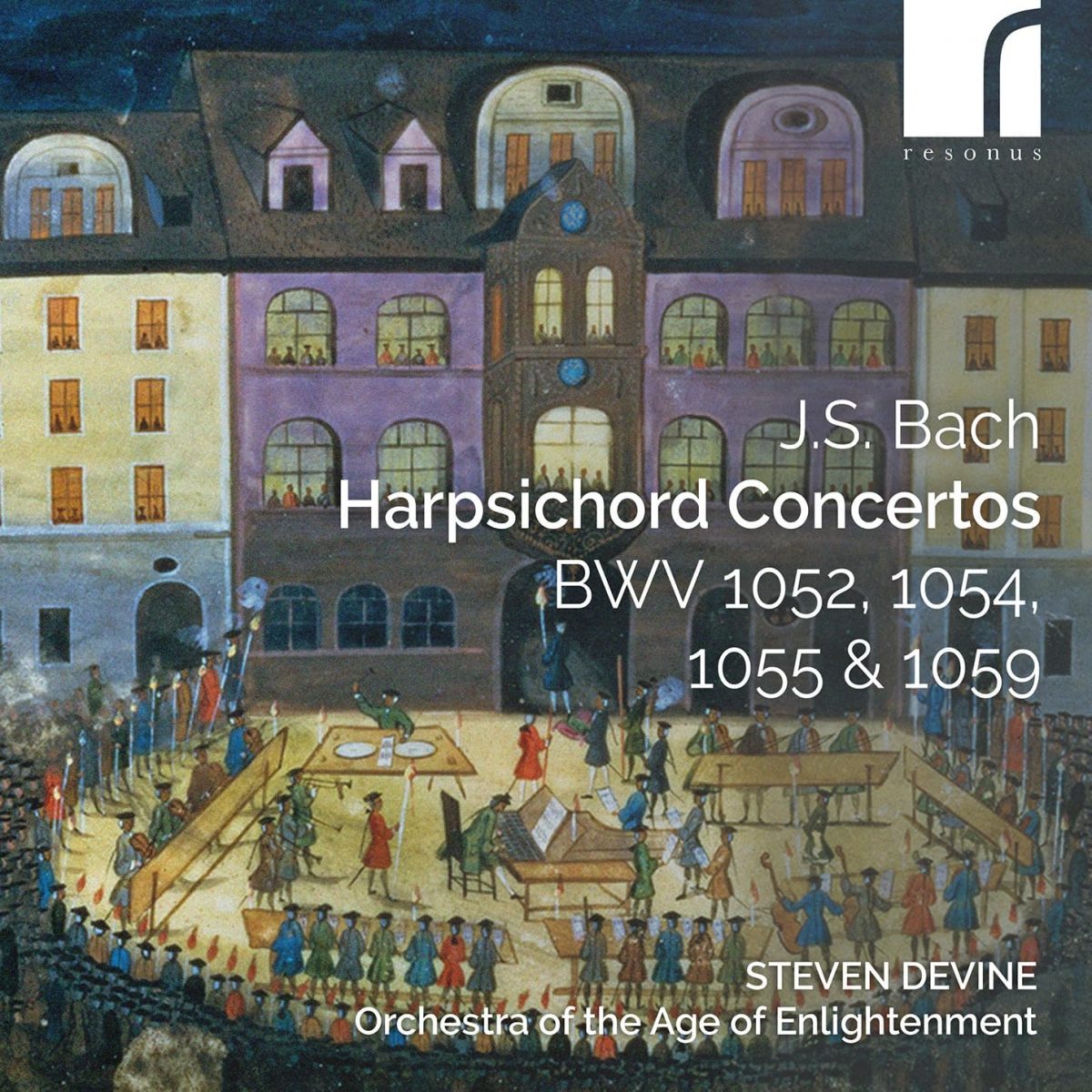Steven Devine, Orchestra of the Age of Enlightenment
63:30
resonus RES10318
This collection of Bach’s harpsichord concertos is notable for including Steven Devine’s reconstruction of BWV 1059, of which the first eight bars alone survive in Bach’s hand indicating that the opening Sinfonia of Cantata 35, Geist und Seele wird verwirret, forms the earliest version of this cantata. What Steven Devine has done is to take other movements from BWV 35 to complete the concerto, using material from the first aria and the sinfonia that opens part ii. This parallels other harpsichord concertos like BWV 1053 which draws material from cantata movements in BWV 169 & 49. He also notes the intriguing autograph instruction written over the top line ‘Haut e Viol.1’, indicating a part for a single oboe – not the three-part oboe band as in the Cantata 35 original.
Devine’s solution to creating an oboe part is to look at those passages where the oboe band and the string band diverge (as in bars 24 ff) and use this to create melodic interplay between the violin and oboe. In the second movement (the Siciliano-like opening of the ABA first aria), he uses the oboe to play much of the low-lying voice part (did Katharina Sprecklesen try it on a d’amore?), though he adds the oboe to the tutti in the opening sinfonia as well, which slightly clouds the distinction he is trying to make between the melodic line of the given voice-part and the filigree diminutions of the harpsichord.
But I like both the feel and the sound of Devine’s versions – all very much in the spirit of Bach’s arrangements of his own pre-loved versions, and hope that this will become an accepted way of re-creating BWV 1059.
And the performance? Devine’s chosen harpsichord for these concertos is a two-manual by Colin Booth (2000) after a single manual by Johann Christof Fleischer (Hamburg, 1710). They recorded in the rather dry acoustic of St John’s, Smith Square and in consequence the sound, though crystal clear, lacks a little bloom. The players are the OAE’s top players, led by Margaret Faultless. Add Devine’s magical fingerwork and you have a recipe for success – except I don’t find it quite as captivating as the recent releases by Andrew Arthur and the Hanover Band.
David Stancliffe
